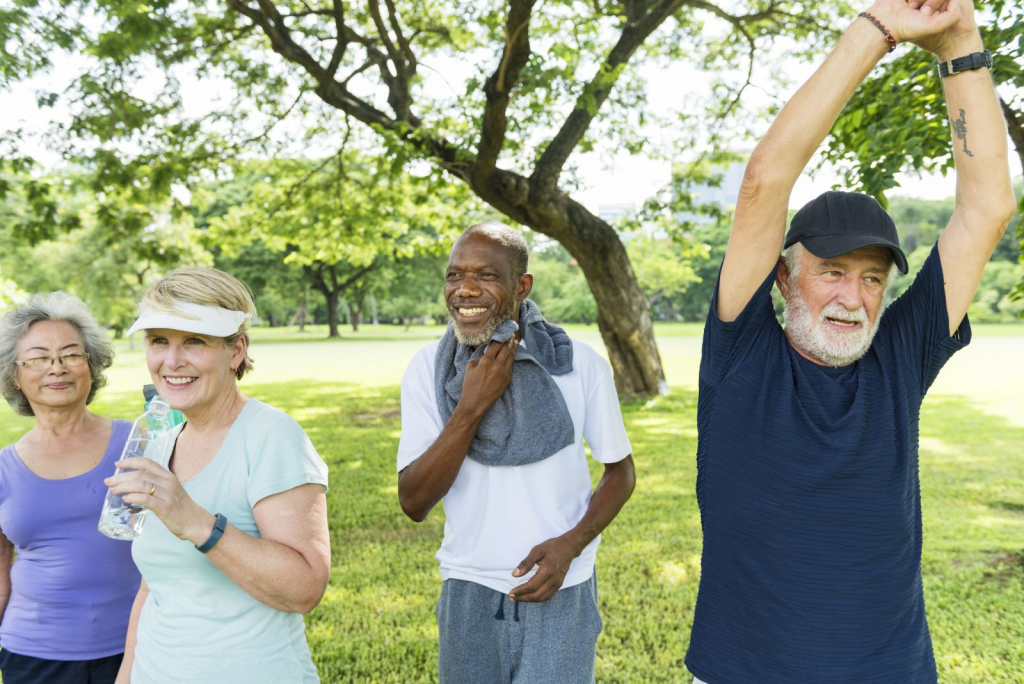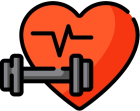
Uncovering unexpected insights to queries like, “How does physical activity alleviate stress?” and delving into related surprises.
How does exercise diminish stress, and can it genuinely provide relaxation?
The notion of rest and relaxation is so commonly expressed that it has almost become a cliché. While it is undeniable that rest can be relaxing, the ubiquity of this phrase often leads many individuals to overlook the equally calming potential of exercise. This holds true for various forms of physical activity as well as specific relaxation exercises.
Exercise itself represents a form of physical stress. The intriguing question arises: can the application of physical stress actually alleviate mental stress? Historical figures like Alexander Pope believed in this connection, asserting, “Strength of mind is exercise, not rest.” Plato concurred, stating, “Exercise would cure a guilty conscience.” You might find yourself in agreement as well, especially if you learn to harness the physical stress of exercise in a controlled and gradual manner.
The Reduction of Stress through Exercise
Aerobic exercise proves essential not only for your heart but also for your mental well-being. While the initial steps may seem challenging, and the early stages might feel more like work than enjoyment, as your fitness improves, exercise transitions from being tolerated to enjoyed and eventually becomes a vital part of your routine.
Consistent aerobic exercise brings about significant transformations in your body, metabolism, heart, and overall mood. Its unique ability to exhilarate and relax, provide stimulation and calm, counter depression, and alleviate stress has been widely observed among endurance athletes and confirmed through clinical trials successfully employing exercise to address anxiety disorders and clinical depression. If both athletes and patients can experience psychological benefits from exercise, so can you.
The question of how exercise can effectively combat challenges as formidable as anxiety and depression can be explained through various factors, ranging from chemical to behavioral.
The neurochemical foundation of the mental benefits of aerobic exercise is evident in its ability to reduce levels of the body’s stress hormones, such as adrenaline and cortisol. Simultaneously, exercise stimulates the production of endorphins—natural painkillers and mood elevators in the brain. Endorphins are responsible for the famed “runner’s high” and the feelings of relaxation and optimism that accompany intense workouts or the satisfaction following post-exercise activities.
Behavioral elements also contribute to the emotional advantages of exercise. As your physical fitness improves, leading to a reduction in waistline size and an increase in strength and stamina, your self-image undergoes positive transformations. A sense of mastery, control, pride, and self-confidence emerges. The renewed vitality and energy acquired through regular exercise propel you to achieve various tasks, while the discipline of maintaining a workout routine aids in accomplishing broader lifestyle goals.
Exercise and sports create opportunities for solitude or socialization, offering a break from daily concerns and the chance to build connections. St. Thomas Aquinas emphasized the universal need for leisure, and exercise serves as both play and recreation. When your body is engaged, your mind is diverted from daily worries, granting you the freedom to think creatively.
Almost any form of exercise proves beneficial. Many individuals find that rhythmic, repetitive movements using large muscle groups, akin to “muscular meditation,” work best. Walking and jogging exemplify this concept. A simple 20-minute stroll, for instance, can clear the mind and alleviate stress. Some prefer vigorous workouts that not only burn calories but also serve as effective stress-relievers, explaining the popularity of elliptical machines. Additionally, stretching exercises, crucial for relaxing muscles post-workout, contribute to mental relaxation as well.
Autoregulation exercise and stress relief
Regular physical activity keeps you healthy as it reduces stress. But another special sort of exercise known as autoregulation exercises can also reduce stress.
Stress comes in many forms and produces many symptoms. Mental symptoms range from worry and irritability to restlessness and insomnia, anger and hostility, or sensations of dread, foreboding, and even panic.
Mental stress can also produce physical symptoms. Muscles are tense, resulting in fidgetiness, taut facial expressions, headaches, or neck and back pain. The mouth is dry, producing unquenchable thirst or perhaps the sensation of a lump in the throat that makes swallowing difficult. Clenched jaw muscles can produce jaw pain and headaches. The skin can be pale, sweaty, and clammy. Intestinal symptoms range from “butterflies” to heartburn, cramps, or diarrhea. Frequent urination may be a bother. A pounding pulse is common, as is chest tightness. Rapid breathing is also typical, and may be accompanied by sighing or repetitive coughing. In extreme cases, hyperventilation can lead to tingling of the face and fingers, muscle cramps, lightheadedness, and even fainting.
The physical symptoms of stress are themselves distressing. In fact, the body’s response to stress can feel so bad that it produces additional mental stress. During the stress response, then, mind and body can amplify each other’s distress signals, creating a vicious cycle of tension and anxiety.
Because the root cause of stress is emotional, it is best controlled by gaining insight, reducing life problems that trigger stress, and modifying behavior. But stress control can — and should — also involve the body. Aerobic exercise is one approach; physical fitness will help promote mental fitness. But there is another approach: you can learn to use your mind to relax your body. The relaxed body will, in turn, send signals of calm and control that help reduce mental tension.
Autoregulation exercises are a group of techniques designed to replace the spiral of stress with a cycle of repose. Several approaches are available.
Breathing exercise reduces stress
Even without formal meditation and controlled breathing, the gentle muscle stretching of yoga can reduce stress. “Full service” yoga is even better. But if that’s not your thing, simple breathing exercises can help by themselves. Rapid, shallow, erratic breathing is a common response to stress. Slow, deep, regular breathing is a sign of relaxation. You can learn to control your respirations so they mimic relaxation; the effect, in fact, will be relaxing.
Here’s how deep breathing exercises work:
1. Breathe in slowly and deeply, pushing your stomach out so that your diaphragm is put to maximal use.
2. Hold your breath briefly.
3. Exhale slowly, thinking “relax.”
4. Repeat the entire sequence five to 10 times, concentrating on breathing deeply and slowly.
Deep breathing is easy to learn. You can do it at any time, in any place. You can use deep breathing to help dissipate stress as it occurs. Practice the routine in advance; then use it when you need it most. If you find it helpful, consider repeating the exercise four to six times a day — even on good days.

Progressive muscular relaxation
Stressed muscles are tight, tense muscles. By learning to relax your muscles, you will be able to use your body to dissipate stress.
Muscle relaxation takes a bit longer to learn than deep breathing. It also takes more time. But even if this form of relaxation takes a little effort, it can be a useful part of your stress control program. Here’s how it works:
Progressive muscle relaxation is best performed in a quiet, secluded place. You should be comfortably seated or stretched out on a firm mattress or mat. Until you learn the routine, have a friend recite the directions or listen to them on a tape, which you can prerecord yourself.
Progressive muscle relaxation focuses sequentially on the major muscle groups. Tighten each muscle and maintain the contraction 20 seconds before slowly releasing it. As the muscle relaxes, concentrate on the release of tension and the sensation of relaxation. Start with your facial muscles, then work down the body.
Forehead
Wrinkle your forehead and arch your eyebrows. Hold; then relax.
Eyes
Close your eyes tightly. Hold; then relax.
Nose
Wrinkle your nose and flare your nostrils. Hold; then relax.
Tongue
Push your tongue firmly against the roof of your mouth. Hold; then relax.
Face
Grimace. Hold; then relax.
Jaws
Clench your jaws tightly. Hold; then relax.
Neck
Tense your neck by pulling your chin down to your chest. Hold; then relax.
Back
Arch your back. Hold; then relax.
Chest
Breathe in as deeply as you can. Hold; then relax.
Stomach
Tense your stomach muscles. Hold; then relax.
Buttocks and thighs
Tense your buttocks and thigh muscles. Hold; then relax.
Arms
Tense your biceps. Hold; then relax.
Forearms and hands
Tense your arms and clench your fists. Hold; then relax.
Calves
Press your feet down. Hold; then relax.
Ankles and feet
Pull your toes up. Hold; then relax.
The entire routine should take 12 to 15 minutes. Practice it twice daily, expecting to master the technique and experience some relief of stress in about two weeks.
Exercise, health, and stress
Few things are more stressful than illness. Many forms of exercise reduce stress directly, and by preventing bodily illness, exercise has extra benefits for the mind. Regular physical activity will lower your blood pressure, improve your cholesterol, and reduce your blood sugar. Exercise cuts the risk of heart attack, stroke, diabetes, colon and breast cancers, osteoporosis and fractures, obesity, depression, and even dementia (memory loss). Exercise slows the aging process, increases energy, and prolongs life.

Except during illness, you should exercise nearly every day. That doesn’t necessarily mean hitting the gym or training for a marathon. But it does mean 30 to 40 minutes of moderate exercise such as walking or 15 to 20 minutes of vigorous exercise. More is even better, but the first steps provide the most benefit. Aim to walk at least two miles a day, or do the equivalent amount of another activity. You can do it all at once or in 10- to 15-minute chunks if that fits your schedule better. Add a little strength training and stretching two to three times a week, and you’ll have an excellent, balanced program for health and stress reduction. And if you need more help with stress, consider autoregulation exercises involving deep breathing or muscular relaxation. Remember, too, that mental exercises are the time-honored ways to cut stress (see box).

